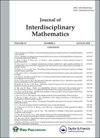经前综合征智能预测系统的数学建模
IF 0.8
Q1 MATHEMATICS
引用次数: 0
摘要
大多数育龄妇女在月经开始前的几周会经历某种形式的身体不适或情绪不安。这些症状通常并不严重,但它们会引起严重的不适,并扰乱患者的日常活动。据估计,5%至8%的女性患有严重的经前综合症(PMS);这些女性中的大多数也可能属于经前焦虑症(PMDD)的范畴。最令人烦恼的症状是那些与情绪和行为有关的症状,如不耐烦、紧张、悲伤、流泪和情绪波动。然而,身体上的问题,如乳房疼痛、消化不良和腹胀,也可能是问题。利用机器学习的梯度增强回归(GBR)方法,研究人员对经前综合征(PMS)的影响进行了预测。Kelly Wallance将经前综合症分为PMS-A、PMS-C、PMS-D和PMS-H,此外还有其他症状。研究人员在谷歌表格上分发Kelly Wallance问卷,然后用于收集数据集的数据。该模型对PMS-A、PMS-C、PMS-D、PMS-H和其他症状的准确率分别为99.99%、99.93%、99.87%和99.97%。本文章由计算机程序翻译,如有差异,请以英文原文为准。
Mathematical modeling of intelligent system for predicting effectiveness of premenstrual syndrome
Majority of reproductive-aged women experience some form of physical discomfort or emotional unease in the weeks leading up to the onset of menstruation. The symptoms are often not severe, but they can cause significant discomfort and disrupt day to day activities of the person experiencing them. It is estimated that between 5 and 8 percent of women experience severe premenstrual syndrome (PMS); the majority of these women may also fall under the category of premenstrual dysphoric disorder (PMDD). The most bothersome symptoms are those associated with the mood and behaviour, such as impatience, tension, sad mood, tearfulness, and mood swings. However, physical problems, such as breast soreness, indigestion and bloating, can also be problematic. Using the Gradian Boost regressor (GBR) method of machine learning, the researchers in this study made a prediction regarding the effects of premenstrual syndrome (PMS). Kelly Wallance classifies premenstrual syndrome as PMS-A, PMS-C, PMS-D, and PMS-H, in addition to other symptoms. Researchers circulated the Kelly Wallance questionnaire on Google Form, which was then used to collect the data for the dataset. The accuracy of the model was measured at 99.99% for PMS-A, 99.93% for PMS-C, 99.87% for PMS-D, 99.92% for PMS-H, and 99.97% for other symptoms.
求助全文
通过发布文献求助,成功后即可免费获取论文全文。
去求助
来源期刊

JOURNAL OF INTERDISCIPLINARY MATHEMATICS
MATHEMATICS-
CiteScore
2.70
自引率
23.50%
发文量
141
期刊介绍:
The Journal of Interdisciplinary Mathematics (JIM) is a world leading journal publishing high quality, rigorously peer-reviewed original research in mathematical applications to different disciplines, and to the methodological and theoretical role of mathematics in underpinning all scientific disciplines. The scope is intentionally broad, but papers must make a novel contribution to the fields covered in order to be considered for publication. Topics include, but are not limited, to the following: • Interface of Mathematics with other Disciplines • Theoretical Role of Mathematics • Methodological Role of Mathematics • Interface of Statistics with other Disciplines • Cognitive Sciences • Applications of Mathematics • Industrial Mathematics • Dynamical Systems • Mathematical Biology • Fuzzy Mathematics The journal considers original research articles, survey articles, and book reviews for publication. Responses to articles and correspondence will also be considered at the Editor-in-Chief’s discretion. Special issue proposals in cutting-edge and timely areas of research in interdisciplinary mathematical research are encouraged – please contact the Editor-in-Chief in the first instance.
 求助内容:
求助内容: 应助结果提醒方式:
应助结果提醒方式:


